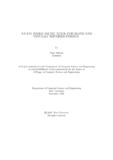| dc.contributor.advisor | Chakrabarty, Dr. Amitabha | |
| dc.contributor.author | Sultana, Nigar | |
| dc.date.accessioned | 2022-10-30T05:45:00Z | |
| dc.date.available | 2022-10-30T05:45:00Z | |
| dc.date.copyright | 2021 | |
| dc.date.issued | 2021-09 | |
| dc.identifier.other | ID: 16266003 | |
| dc.identifier.uri | http://hdl.handle.net/10361/17542 | |
| dc.description | This thesis is submitted in partial fulfillment of the requirements for the degree of Master of Science in Computer Science and Engineering, 2022. | en_US |
| dc.description | Cataloged from PDF version of thesis. | |
| dc.description | Includes bibliographical references (pages 39-40). | |
| dc.description.abstract | Vision loss has a devastating effect on the lives of those who experience it. It affects
as well as on their family, friends and society. Completely loosing or deterioration of
eyesight is frightening and unbearable which leaves those affected to question their
ability to maintain their independence, remain employed, and provide for themselves
and their families. Loss of vision can affect one’s standard of life, his independence
and mobility as well as it also has been linked to falling down, being injured, mental
health issue, social function, cognition and educational attainment. In our society
visually impaired or blind people is not very uncommon. At least 2.2 billion people
have a near or distance vision impairment globally according to the World Health
Organization (WHO). People with vision impairment have lower rates of productiv ity and workforce participation. They also have high rates of anxiety and depression.
The deterioration of vision that they have to suffer from not only matter but also
the overall quality of their lives deteriorates too. Vision impairment causes social
isolation, a higher risk of falls and fractures. The biggest challenge for a blind per son is to navigate around places. Without a human guide he or she cannot navigate
around places, especially in a new terrain. Vision impairment is associated with an
increased risk of fractures which has been shown in multiple studies. This prob lem can be life threatening as well.To make life easier for someone with vision loss,
SMART STICK has been developed. By detecting obstacles and identify the cur rent position of the blind and visually impaired person IoT based SMART STICK
can solve many challenges. Basic requirements of the blind and visually impaired
person can be met through this Stick. This IoT based Smart Stick can make a
visually impaired person to walk more confidently. The study hypothesizes with the
concept of a Smart Stick which allows a visually impaired person to navigate over
obstacles and have less incidents.The development work of this Stick involves coding
and physical installation of various types of components. The aim of this project
is to build a smart stick that could communicate with its users helps him to move
freely and overcome his disability. | en_US |
| dc.description.statementofresponsibility | Nigar Sultana | |
| dc.format.extent | 40 Pages | |
| dc.language.iso | en_US | en_US |
| dc.publisher | Brac University | en_US |
| dc.rights | Brac University theses are protected by copyright. They may be viewed from this source for any purpose, but reproduction or distribution in any format is prohibited without written permission. | |
| dc.subject | IoT | en_US |
| dc.subject | Smart Stick | en_US |
| dc.subject | Blind and Visually Impaired person | en_US |
| dc.subject.lcsh | Internet of things | |
| dc.title | An IoT based smart stick for blind and visually impaired person | en_US |
| dc.type | Thesis | en_US |
| dc.contributor.department | Department of Computer Science and Engineering, Brac University | |
| dc.description.degree | M. Computer Science and Engineering | |

